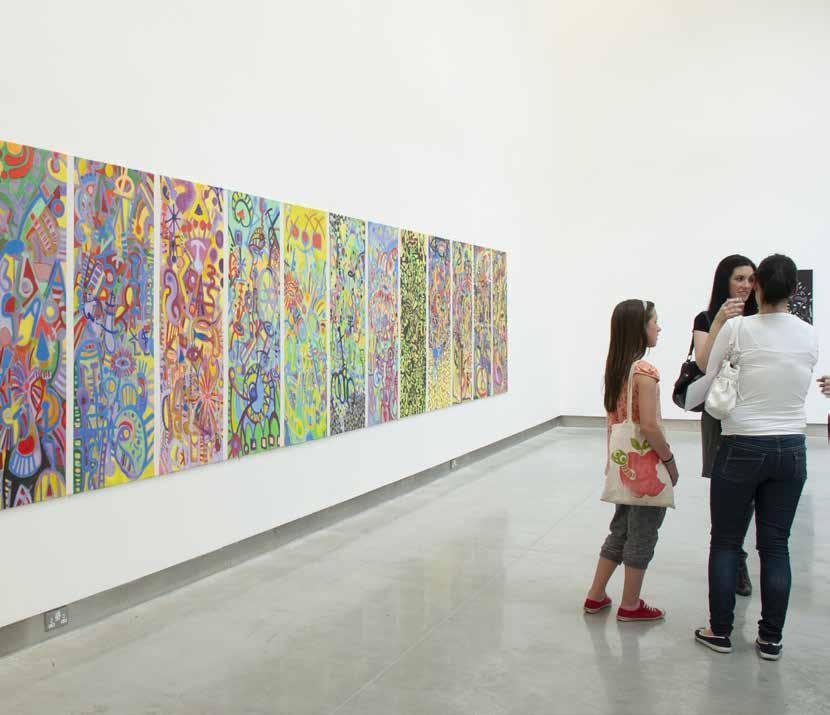
8 minute read
Derek Culley
My art is me
Advertisement
It has certainly been a large part of his life. He had his first studio when he was only 16, a garage rented from Agnes Kinsella, the mother of poet Thomas Kinsella, which provided a space for escape and creativity. He's had other jobs. After all, Derek brought up five children and art doesn't always pay bills, but it's has been a constant throughout his journey. Now in his late 60s, he still views art as an essential aspect of his everyday life. An Irish artist who now lives on the Sefton coast might seem an unusual exhibitor for Yorkshire Art. Derek explains that he has always felt a bond to Yorkshire, where his mother grew up, as did Denis Bowen, his mentor. Denis was born in South Africa but was raised in Huddersfield, the town where Derek maintained family links and in a county where he still has many friends in Yorkshire to this day.
The Mentor
Denis Bowen - artist, gallery director and promoter of abstract and avant-garde art in Britain, was described by Derek as like a father to him. He believes that Denis found an honesty in his work. Derek is self taught, having managed only three weeks as a night student at the National College of Art and Design (NCAD) in Dublin. His lack of formal training may have contributed to the personal approach to art appreciated by Bowen. Denis taught him about the art world, leading to Derek collaborating with other artists, holding solo exhibitions and working as a curator. In the 1980s Derek curated exhibitions for the Windsor Community Art Centre (WAC), including Damien Hirst’s first solo exhibition.
Exhibiting and Celtic Vision
Derek has exhibited in London, Dublin and across Europe. In the 1980s he often exhibited as a member of Celtic Vision, the organisation he founded with Dennis Bowen and Scottish artist John Bellany. When asked if he sees his art as being specifically Irish, he is quick to say that he does not in any political or linguistic sense. However, he is aware that he approaches art and the English language through the lens of his Irish heritage and brogue. Celtic Vision brought together artists from seven Celtic Regions; Cornwall, Ireland, Scotland, Wales, Brittany, Galicia and the Isle of Man, in order to present new voices in contemporary art.
Poetry can be more than words
Language is important to Derek. His ‘doodling’ might include the mark making of his art or writing poems. These days his poems are for his own satisfaction, although he was published when younger. His art has been described as visual poetry and he says that writing is an important part of his self expression which may lead to expression through visual art. Derek is aware of symbols all around us and
A helping hand
In 2006-2007 Derek benefitted from a $25,000 grant from the prestigious Pollock-Krasner Foundation, which allowed him to commit more time to his art. He cites Jackson Pollock as an inspiration for his work and it's clear to see that influence in his artwork, the same abstract expressionist tradition which often shows a similar interplay between colour.
Influence and Inspiration
The assessment for the grant was undertaken by another of his heroes, John Hoyland. It is with great pride that Derek recounts how Hoyland could ‘find no holes’ in his composition. Often paintings will have an area that is weaker than the rest but Hoyland felt these works were complete. Derek has been influenced by many artists. He cites the American Mark Tobey as having had a particularly personal influence. The calligraphy that influenced Tobey’s work clearly resonates with the idea of visual poetry in Derek’s work. However, he appreciates art from many periods and genres: Reubens, Caravaggio and the drawings of Van Gogh have all made an impression upon him, alongside more recent artists such as Jim Dine. He looks for spirituality in art and hopes that his own work conveys this to others.
Learning and Research
Although Derek never went to Art school he has certainly studied art. He talks about how, when he first moved to London he would spend three hours every Sunday morning exploring just two art works at the Tate. His trips to Millbank (there was only one Tate Gallery at the time) enabled him to grasp a fuller understanding of composition. He took an MA in marketing, choosing for his dissertation topic "Marketing the Visual Arts in the UK - are there lessons to be learned from Europe?" This gave him further insight into the art world, enabling him to analyse art galleries from an academic point of view. He has an insatiable curiosity and is constantly researching, about art and the world in general.
Discovery
A few years ago Derek discovered a new colour palette, through iPad painting. He was inspired by the iPad works of David Hockney. He explains the colours are unlike any you can create with paints and have added a new vibrancy to his work. Perhaps here, more than anywhere else, it is possible to understand what Derek means by using visual writing to form a complete composition. Layers of colour and marks form in a symphonic manner until they produce a completed image. Colour is important in most of Derek’s works, which often take the form of groups of coloured panels. For instance, the fourteen panels of Golgotha, his response to the stations of the cross, is designed to encourage meditation. When hung in Liverpool’s Anglican Cathedral it was hard not to think of them in terms of shafts of coloured light. Yet he also works in black and white and reports that some people find this work more immediate. Interestingly, he takes black and white photos of all his works. He explains that seeing a coloured image in black and white enables him to look for movement and flow.
Curation Continued
In recent years exhibitions have often been more local, sometimes as part of the Liverpool Biennial. When he moved to the north, in 2004, he probably thought his curatorial days were behind him. Then in 2008 he was asked to curate an exhibition of contemporary Irish artists for the Liverpool City of Culture celebrations. Liverpool, and the wider Merseyside area, have become a hub for contemporary art that Derek Culley clearly has a place within.
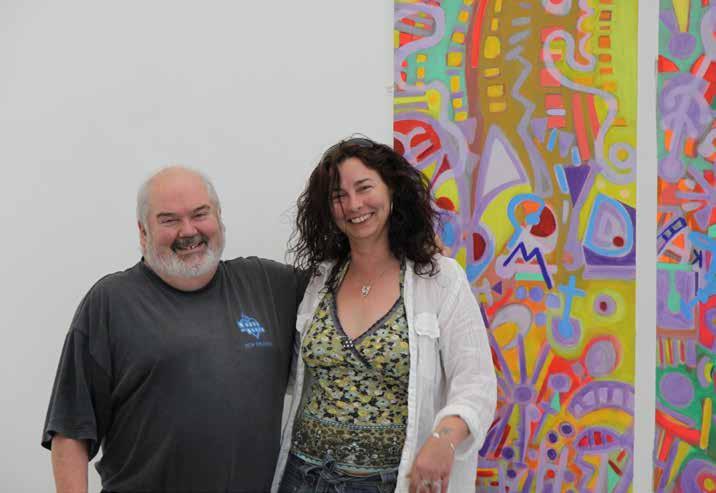
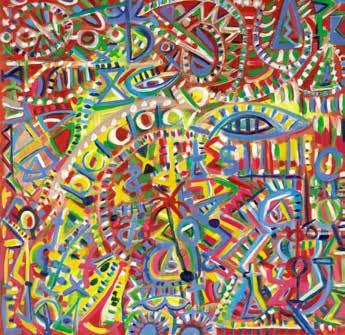
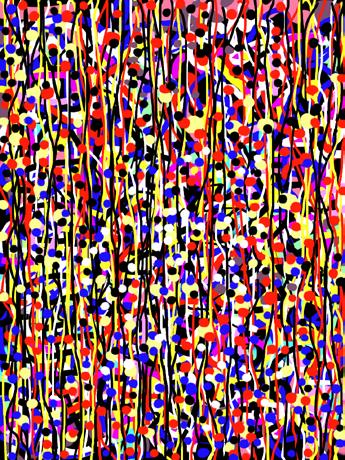
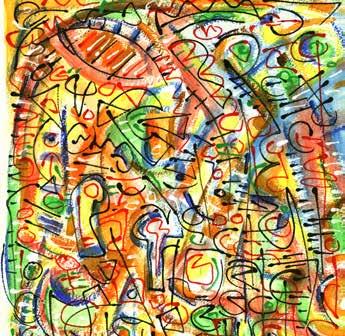

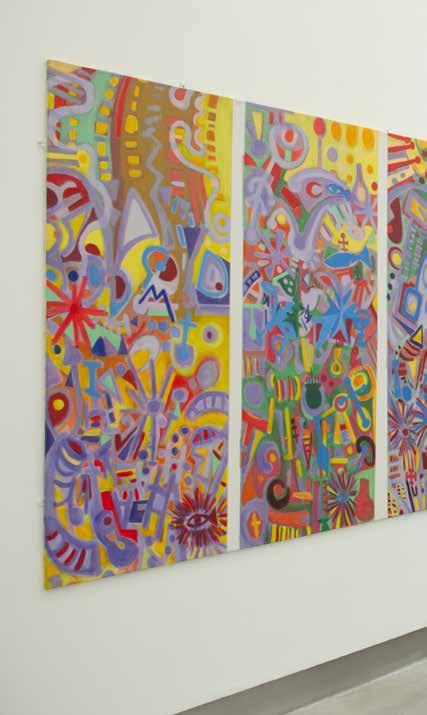
His 2016 exhibition, Landings, at the Atkinson in Southport, can still be viewed as a video presentation on the Atkinson’s website. The exhibition, curated by Stephen Whittle, marked the inauguration of the Atkinson’s commercial gallery for regional artists. Derek was impressed by the skill that Stephen displayed in selecting and hanging his work and believes that this exhibition gives a good insight into his oeuvre.
A family affinity
Derek has clearly engendered a love of art in his offspring. All of his four sons and one daughter have some affinity to art. His daughter, Grace, has impressed him with her ability to hang exhibitions ,whilst his son Duncan, under the name Super Xiao Ma, works as a professional artist. Derek's wife of 44 years, Eilish is an accomplished photographer who has also exhibited at the Liverpool Biennial.
Adapting to adversity
A deterioration in his physical mobility due to Charcot-MarieTooth Syndrome means that it now takes Derek longer to produce a piece of art. He first became aware of this hereditary condition when one of his children was diagnosed. It then came to light that Derek himself had the condition and had been subconsciously adapting to it for many years. Unique approaches to handling his mark making implements have stemmed from this. Others might struggle to paint in the same way, his body having formed strategies to overcome muscle and nerve deterioration. Derek now struggles to walk and can no longer do the washingup, an activity which, strangely, he finds he misses. Yet despite the physical processes becoming more difficult and taking longer he still finds enjoyment in producing art. When asked if his disability has changed his art he jokes that he now remembers to sign his art work. As a vulnerable person, 2020 was a difficult year for him. He finds the world a sad and frustrating place at the moment. The failure of some people to take Covid 19 seriously has angered him. He is deeply concerned by climate change and the plastic throwaway culture we live in. He expresses himself through works on paper. He hates wasting paper and uses it as a constant resource.
He has found solace in his art and in conversations with other artists around the world. He enjoys the writing he undertakes for Art and Museum magazine. It enables him to continue to be part of a community of artists. He can continue to engage in dialogue despite the physical separation. Derek has used art as a way to step back from the struggles of life. He hopes others will do the same. Perhaps art can enable us all to reflect upon our actions and give some hope for the future.
Words by Debbie Rolls
